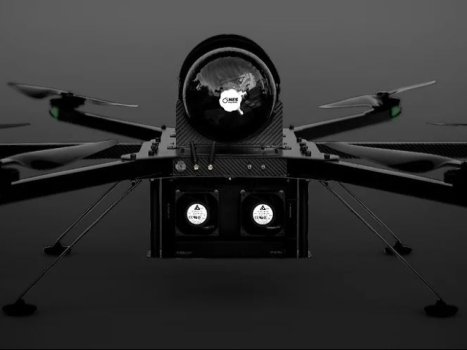K
Kathleen Martin
Guest
With the use of drones on the increase in the power sector and other areas and the demand for longer ranges and flight times, they are an obvious target for the use of hydrogen as a fuel as a lighter – and potentially cleaner – alternative to the standard lithium-ion battery power.
The first hydrogen-powered drone flights of which we are aware took place back during 2020 by the multinational Doosan in South Korea, with the delivery of facemasks to remote islands and over two-hour flight-time tests monitoring gas pipelines over distances of up to 80km.
Subsequently, the company has evolved its hydrogen-powered drones, it’s first the DS30 built for endurance and the smaller general purpose DT30, to second generation models. Features of the DS30W include improved wind resistance – it has been demonstrated in winds as strong as 12m/s – while the DT30N offer an extended flight time of 2.5 hours and increased 5kg payload.
With the recent launch of the DS30W in Europe, Doosan is eyeing its use out in the North Sea.
In partnership with the Dutch Maritime Emerging Technologies Innovation Park (METIP) and the operator DroneQ Robotics, the companies intend to develop applications for hydrogen drones through demonstration and validation of use cases and pilots in areas such as inspections and goods delivery in the maritime and offshore energy industries in the North Sea.
“The second-generation hydrogen drone from Doosan Mobility International has a flight time of two hours and is resistant to adverse weather conditions, making it ideal for complex maritime applications such as inspecting offshore installations or performing search and rescue missions,” states John Troch, co-founder of the central Netherlands based DroneQ.
First flight in Japan
Now the Singapore headquartered H3 Dynamics has also joined the hydrogen drone race, with the first test flights in Japan, with approval from the country’s Ministry of Economy, Trade and Industry (METI).
The drone was equipped with H3 Dynamics’ AEROSTAK hydrogen fuel cell system and integration support was provided by Toyota Tsusho Nexty Electronics, a car electronics subsidiary of the Toyota Group.
With the flight demonstration under its belt, H3 Dynamics, which recently closed a $26 million series B financing, anticipates that its success opens the way towards wider adoption of hydrogen in air mobility applications.
Continue reading: https://www.powerengineeringint.com/smart-grid-td/drone-technology/hydrogen-powered-drones-hold-potential-for-offshore-energy/
The first hydrogen-powered drone flights of which we are aware took place back during 2020 by the multinational Doosan in South Korea, with the delivery of facemasks to remote islands and over two-hour flight-time tests monitoring gas pipelines over distances of up to 80km.
Subsequently, the company has evolved its hydrogen-powered drones, it’s first the DS30 built for endurance and the smaller general purpose DT30, to second generation models. Features of the DS30W include improved wind resistance – it has been demonstrated in winds as strong as 12m/s – while the DT30N offer an extended flight time of 2.5 hours and increased 5kg payload.
With the recent launch of the DS30W in Europe, Doosan is eyeing its use out in the North Sea.
In partnership with the Dutch Maritime Emerging Technologies Innovation Park (METIP) and the operator DroneQ Robotics, the companies intend to develop applications for hydrogen drones through demonstration and validation of use cases and pilots in areas such as inspections and goods delivery in the maritime and offshore energy industries in the North Sea.
“The second-generation hydrogen drone from Doosan Mobility International has a flight time of two hours and is resistant to adverse weather conditions, making it ideal for complex maritime applications such as inspecting offshore installations or performing search and rescue missions,” states John Troch, co-founder of the central Netherlands based DroneQ.
First flight in Japan
Now the Singapore headquartered H3 Dynamics has also joined the hydrogen drone race, with the first test flights in Japan, with approval from the country’s Ministry of Economy, Trade and Industry (METI).
The drone was equipped with H3 Dynamics’ AEROSTAK hydrogen fuel cell system and integration support was provided by Toyota Tsusho Nexty Electronics, a car electronics subsidiary of the Toyota Group.
With the flight demonstration under its belt, H3 Dynamics, which recently closed a $26 million series B financing, anticipates that its success opens the way towards wider adoption of hydrogen in air mobility applications.
Continue reading: https://www.powerengineeringint.com/smart-grid-td/drone-technology/hydrogen-powered-drones-hold-potential-for-offshore-energy/

